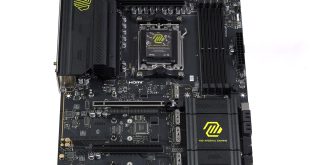We measured the power consumption with the system resting at the Windows 7 desktop, representing idle values.
The power consumption of our entire test system is measured at the wall while loading only the CPU using Prime95′s Small FFTs setting. The rest of the system’s components were operating in their idle states, hence the increased power consumption values (in comparison to the idle figures) are largely related to the load on the CPU and motherboard power delivery components.
MSI's Z87M Gaming shows favourable power consumption numbers against ASRock's Z87 Killer. Given that the latter used a needlessly-high multi-core turbo voltage of 1.28V (as opposed to MSI's setting of around 1.20V), the power consumption numbers output by MSI's Z87M Gaming are closer to those of a ‘typical' Z87 setup.
At the same voltage levels (ignoring typical fluctuations and motherboard-specific offsets) MSI's Z87M Gaming uses less energy than ASRock's Z87 Killer, albeit by a very small margin. This could possibly indicate an efficient CPU power delivery system equipped with the Z87M Gaming motherboard.
 KitGuru KitGuru.net – Tech News | Hardware News | Hardware Reviews | IOS | Mobile | Gaming | Graphics Cards
KitGuru KitGuru.net – Tech News | Hardware News | Hardware Reviews | IOS | Mobile | Gaming | Graphics Cards




That is a beautifully designed board, love it !
Gets my thumbs up. looks nice for the price too, most of the lower priced boards don’t look too nice.
Will this hit the shelves in America in December too, and at what price point?